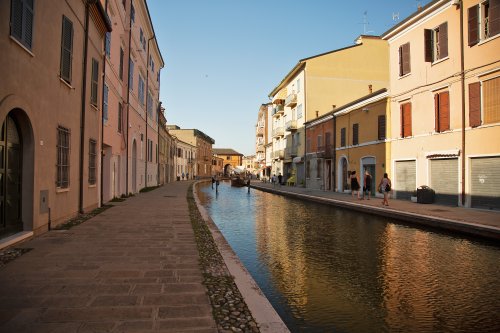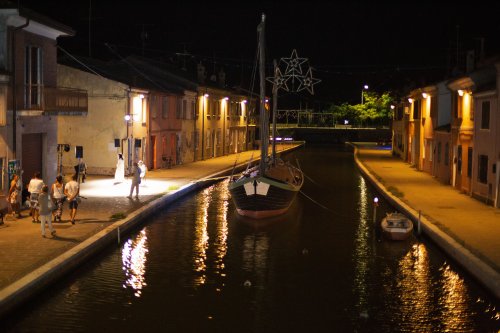Comacchio, the little Venice
The magic of a unique lagoon city
Comacchio, also known as 'Little Venice', retains intact its characteristic of being a lagoon town, with its waters running the length and breadth of the town and for a certain stretch encircling it as they once did, when it could only be reached by boat.
This was until 1821, when the city, built on thirteen islands, was united with the mainland.
The Trepponti Bridge is the emblem of the place; from it, the inland waters are distributed through a dense network of canals, along which the low, multicoloured houses of the town and the rows of boats of various sizes are reflected in perfect symmetry.
It is possible to visit the old town on board the typical boats called 'batanas', which provide the service free of charge.
You start from the monumental Trepponti, in front of the Antica Pescheria, and head straight for the Ponte Degli Sbirri or delle Carceri opposite.
Next to it stands Palazzo Bellini, a typical example of a 19th-century aristocratic mansion, the home of an aristocratic Comacchio family, now housing the historical archive and municipal library. Its sumptuous rooms also house the Gallery of Modern Art, which hosts national reviews and exhibitions every year. In the vicinity of Palazzo Bellini is the Museo del Cargo della Nave Romana, which exhibits the precious material found on board a trading vessel dating back to the 1st century B.C., discovered in 1981. Opposite Palazzo Bellini stands the majestic structure of the Old San Camillo Hospital, an eighteenth-century work that ceased to be such since 1970 to become the seat of the Museum of Human Cultures in the Po Delta in the near future. Heading towards the heart of the city we find the Clock Tower and, next to it, the Loggia dei Mercanti, built in 1621 as a grain store for the city's poor.
Continuing westwards, you arrive at the Duomo or Cathedral of San Cassiano, patron saint of the city with its Bell Tower. Walking down the central Via Mazzini, we then come to the stupendous Loggiato dei Cappuccini, formed by 142 arches supported by an equal number of marble columns. The loggia flows right next to the Sanctuary of the Aula Regia, the first documents of which date back to the 10th century. Adjacent to the sanctuary is the Marian Museum of Contemporary Sacred Art, which houses valuable works by great artists ranging from Sepo to Remo Brindisi. The tour of churches in the lagoon city can be completed by heading towards the opposite side of the city and first visiting the Church of the Carmine, located beside the Pizzetti Bridge and opposite the bridge of the same name, dating back to the 17th century.



